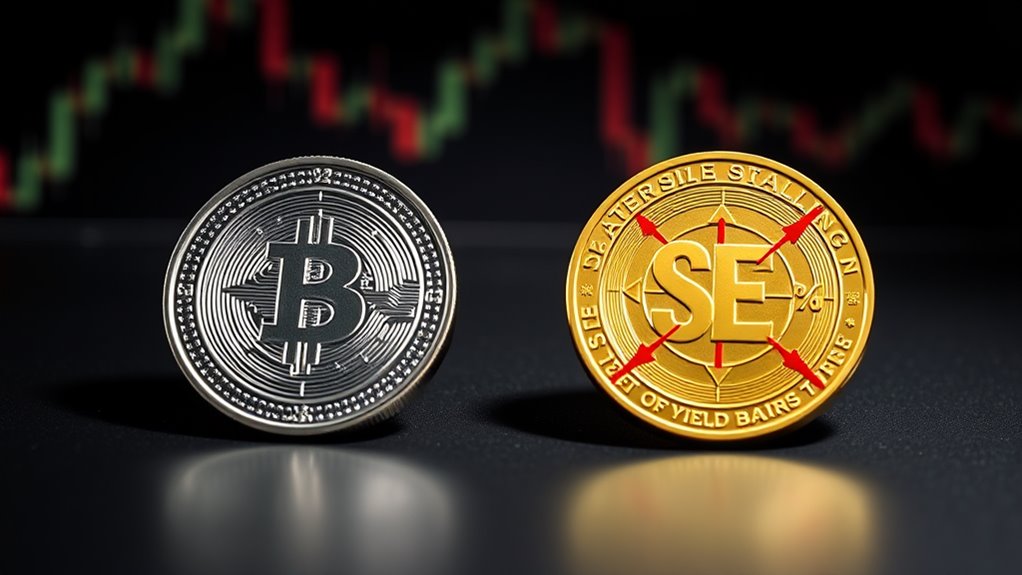Stablecoins Escape Securities Classification, While Yield-Bearing Tokens Remain in SEC Crosshairs
Note: This post may contain affiliate links, and we may earn a commission (with No additional cost for you) if you make a purchase via our link. See our disclosure for more info. The crypto world is constantly changing. This content is for informational purposes only and not financial, legal, or professional advice So, please verify the info on the cryptocurrency provider’s websites.
 stablecoins not securities yields targeted">
stablecoins not securities yields targeted">While both operate in the digital asset space, stablecoins and yield-bearing tokens face dramatically different regulatory treatments from the SEC. Stablecoins just dodged a bullet. The SEC finally clarified that “covered stablecoins” aren't securities – a rare win for crypto these days.
These tokens must be redeemable at fixed prices with fully backed reserves. No yield. No promises of profit. Just boring, stable value. Exactly what keeps the SEC's lawyers at bay.
The magic happens through redemption guarantees and arbitrage. When prices drift, traders swoop in to exploit the difference. Basic economics at work. The reserves must be segregated from business operations too – no funny business with customer funds. Proof-of-reserve attestations might become standard. The SEC specifically emphasized that these stablecoins are meant for payment and storage rather than investment purposes.
Algorithmic stablecoins? Still in regulatory limbo. Good luck with that experiment.
Yield-bearing tokens? Whole different ballgame. The minute you start paying holders returns, SEC sirens blare. The Howey test gets triggered faster than you can say “expected profits from others' efforts.”
These tokens link financial performance to investor participation. Securities, plain and simple. This market, though still emerging, is growing rapidly with the tokenised treasury market already valued at $1.2 billion and experiencing 2.7x growth in just one year.
Yet exceptions exist. Figure Markets somehow got their YLDS stablecoin approved as a registered security. It pays 3.85% yield while maintaining self-custody features. Quite the regulatory feat.
Pi Protocol is attempting similar maneuvers. They're playing the game by SEC rules – tedious registration and all.
Industry players aren't thrilled with this divide. Coinbase's Brian Armstrong argues that token holders should share in protocol revenues like bank depositors earn interest. The SEC isn't buying it. Not yet, anyway.
The market implications are significant. Traditional stablecoins like USDT and USDC maintain dominance while yield-bearing competitors face uphill regulatory battles.
And sustainability questions loom – these yield models work great in high interest environments, but what happens when rates drop?
Crypto's regulatory saga continues. Stablecoins got clarity. Yield tokens got scrutiny. The dividing line? Those three magic letters: Y-I-E-L-D. Who knew returns could be so problematic?











